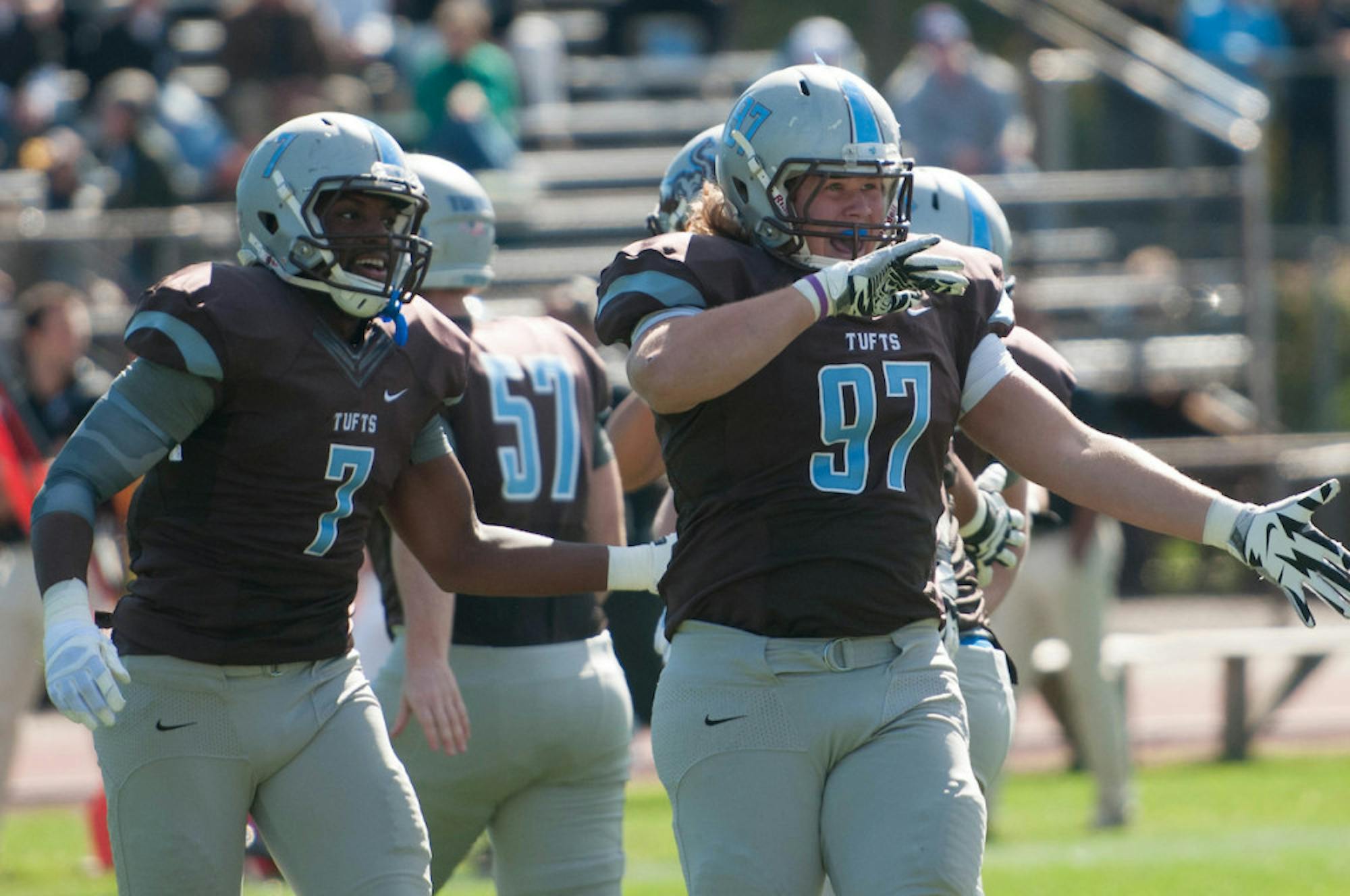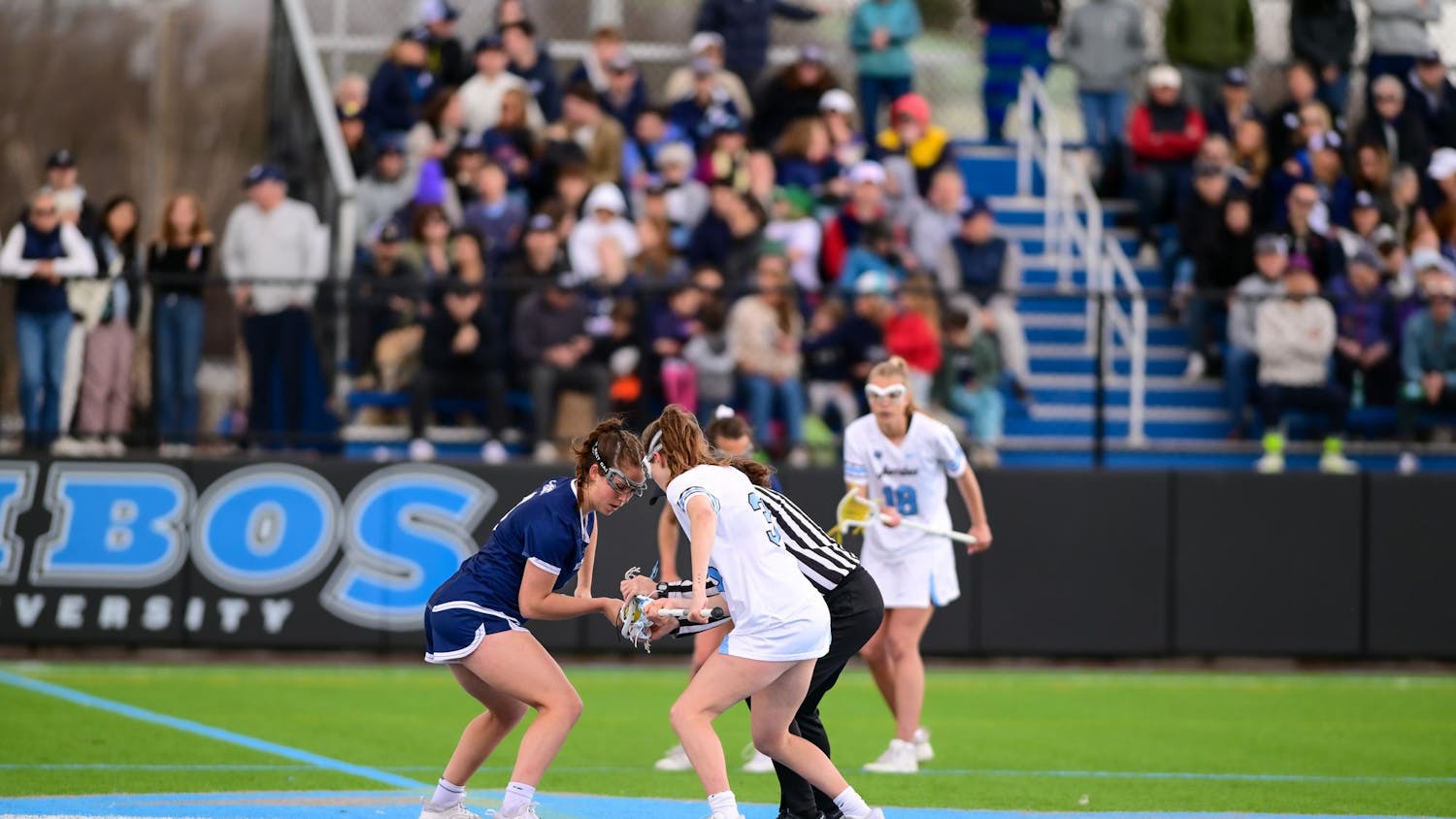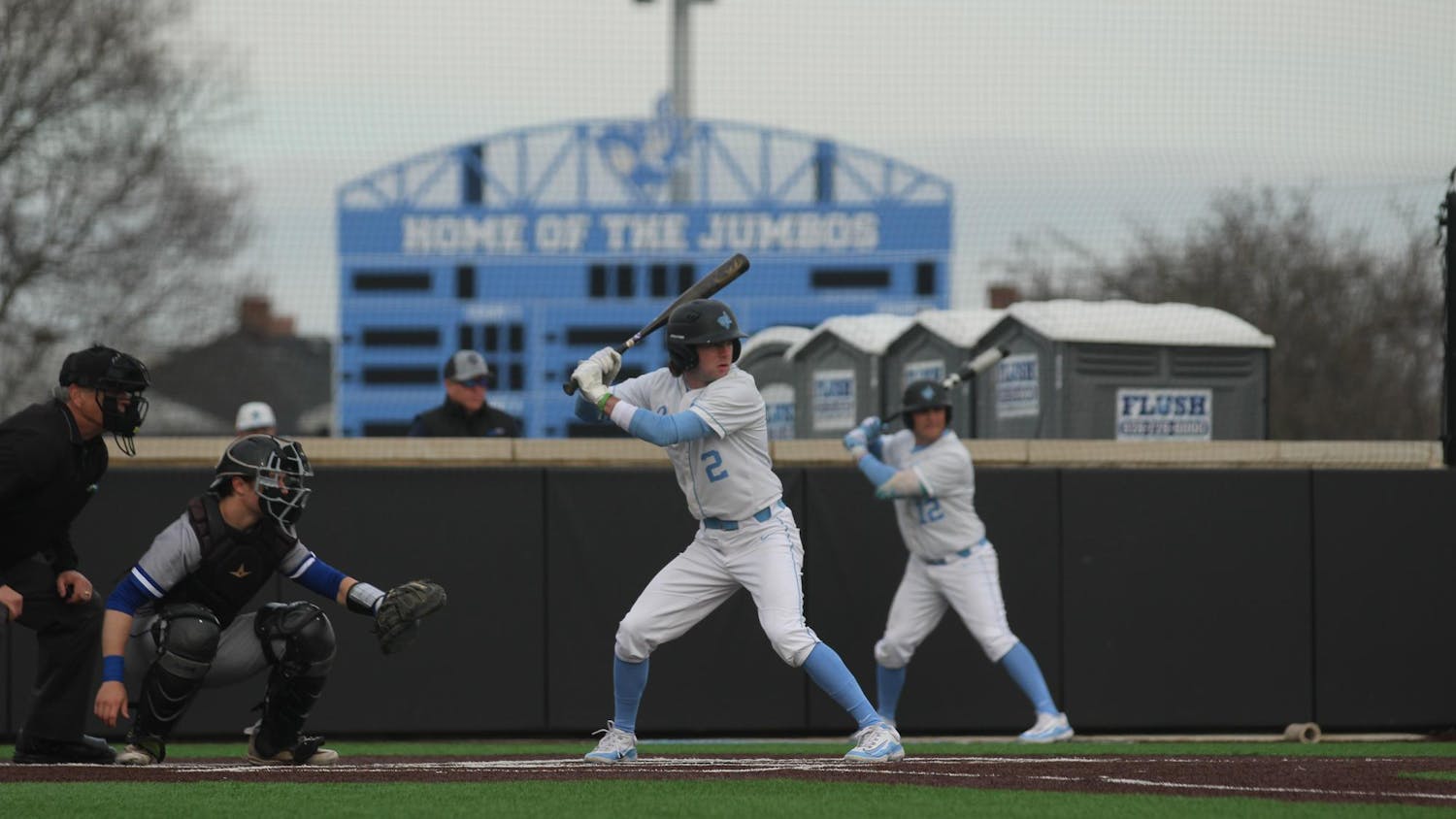NESCAC football players are in increasing danger of suffering from health complications related to obesity as a result of massive gains in weight, according to a recent study by four researchers at the Tufts University School of Medicine. In particular, linemen — the largest players on a football team whose role is to compete on every down for control of the line of scrimmage — are much heavier today than they were decades ago and are thus at greater risk of suffering long-term harm to their health after their careers end.
The findings were published in the Journal of Athletic Training in May 2016. One of the four contributors was David J. Greenblatt, a doctor who holds the Louis Lasagna, M.D., Endowed Professorship in the School of Medicine’s Department of Integrative Physiology and Pathobiology. Greenblatt himself is a former NESCAC offensive lineman, having served as co-captain of Amherst’s football team during the 1965-66 season.
“I’ve always been a small college football freak,” Greenblatt said. “I was the same size, not big by any means, but not [small]. I was an offensive guard — 175, 180 pounds.”
Now, players are much bigger, according to Greenblatt.
“I like to go back to college games and now I notice that when I go back, I feel like Gulliver in reverse,” Greenblatt said.
The study’s findings confirmed Greenblatt’s observations. The researchers examined the body size characteristics of NESCAC football players between the years 1956 and 2014. They found that the most dramatic increases in weight were among offensive and defensive linemen, who on average are 37.5 percent heavier than they were 60 years ago. By comparison, the average male today weighs a mere 12 percent more than his demographic counterpart in 1956, demonstrating the disproportionate growth in girth among players in the trenches.
Height increases alone cannot explain the discrepancy, as body mass index (BMI) — which helps to account for height — has surged as well. Today, over 30 percent of NESCAC linemen have a BMI over 35 — BMI measures over 30 are considered obese. These results were consistent across all 10 NESCAC schools.
“We are basically creating a special population for the needs of the sport,” Greenblatt warned.
Skill position players, meanwhile, have more or less matched the modest weight growth of the rest of the population over the same timespan.
“They’re big and strong kids, but they have less body fat,” Greenblatt said. “So the increase in size with that group is sort of paralleling the general population.”
According to senior defensive end Tucker Mathers, additional weight disparities exist between offensive and defensive linemen.
“A good, really athletic defensive end will probably be 225 pounds in the NESCAC,” he said. “Those guys are shredded. Like, look at [junior] Zach Thomas — he’s ripped. He’s got, like, no body fat.”
Offensive linemen, meanwhile, weigh significantly more, Mathers explained.
“Those guys are built to be a lot heavier than the defensive linemen,” he said. “They’re typically like 300 pounds, and it’s not really the good 300 pounds if you look at most of your offensive line. Those guys struggle a lot because they need to cut weight.”
Senior offensive lineman Alex Kim provided an additional perspective on the physiological changes that players undergo during the entire calendar year.
"[During the season], you're doing a lot physically for your body, so you need the recovery period after the season. Then, after you have that recovery period, you let your body kind of regrow and recover," he said. "Conditioning definitely takes precedence in the summer, so in the spring you kind of max out on your weight and strength."
Greenblatt conceded that, given the more muscular body types of football players compared to the general population, weight and BMI are imperfect measures of obesity.
“The gold standard for obesity would be an actual measure of percentage body fat, and there are ways of doing that,” Greenblatt said. “Also, it turns out that waist circumference — how big you are around the waist — is maybe as good [an indicator] as BMI.”
Nevertheless, Greenblatt contended that his results, as well as those of his fellow researchers, were strongly indicative of a larger trend.
“Things would not really have been different in terms of the conclusions if we had been able to measure body fat,” he said.
According to Greenblatt, excess weight becomes troublesome for players after their careers end.
“[When] you're 22 years old and 270 [pounds], that’s okay. It's what happens afterwards that’s the problem,” he said.
Greenblatt explained that football players who retain elevated weights in the years after college are at increased risk for a number of obesity-related infirmities, including (but not limited to) cardiovascular disease, hypertension, diabetes, joint degeneration and heart attacks.
“It brings up the public health question of what happens to these guys after they stop playing,” he said. “It’s definitely not healthy to sustain this kind of weight. It's okay when you’re young and playing football, but there have got to be lifestyle changes if you're going to get into healthy body habits as life progresses.”
Mathers described the struggle players often face when trying to manage their weight before, during and after seasons.
“You try to increase your weight in the offseason in the spring,” he said. “But when you’re in season, you’re not lifting as much and you’re burning so many calories and you’re beat up all the time, so you’re losing weight. So you've got to do your best to eat. You try to maintain [weight] during the season.”
Kim vocalized similar experiences with the heightened need to maintain a high caloric intake during the season.
"You have to eat more during the season because you're doing ... a lot of physical activity, [including] stuff you're not accustomed to, even if you're conditioning during the summer," Kim said. "People that eat well and [are] able to intake the good nutrients that your body needs usually maintain weight. Those that do not will drop weight during the season."
When players try to cut weight — including after their careers end — their old weight-maintaining habits remain, thereby creating potential roadblocks.
“You go into the dining hall and you can’t eat, like, four cheeseburgers and [drink] three sodas. You’ve got to [eat] a salad,” Mathers said. “That first month that you’re cutting weight, it stinks because you’re hungry all the time, you’re working out, you’re burning calories and your body is used to taking in all these calories, so you have to be extremely mentally tough in a way to do it."
Still, according to the study’s findings, the problem of NESCAC linemen disproportionally getting larger — while not having improved in recent years — may not be getting worse, either.
“For whatever reason, mostly this [growth] happened between 1981 and 1996. That’s when you get the biggest slope,” Greenblatt said. “Fortunately, it seems to, in the last 10 or so years, [have] levelled off, so 2016 does not look too different from 2006. That’s a good sign.”
Still, Greenblatt emphasized that more action is needed.
“I think those recourses are available and it's just a question of mobilizing the awareness among the guys and getting that connected, but I think that should be doable,” he said. “Obviously, the NESCAC players — they’re all smart guys, [so] they can look ahead to the future and see where they are.”
Tufts Medical School professor identifies weight gain trends among NESCAC linemen






